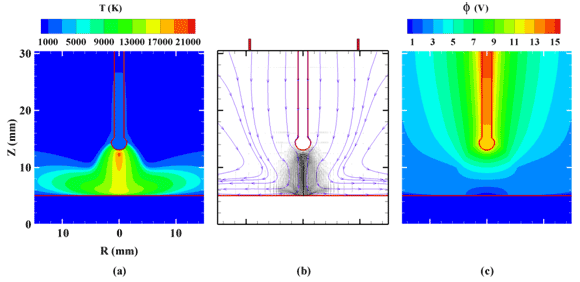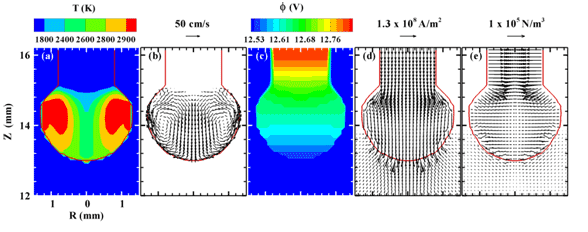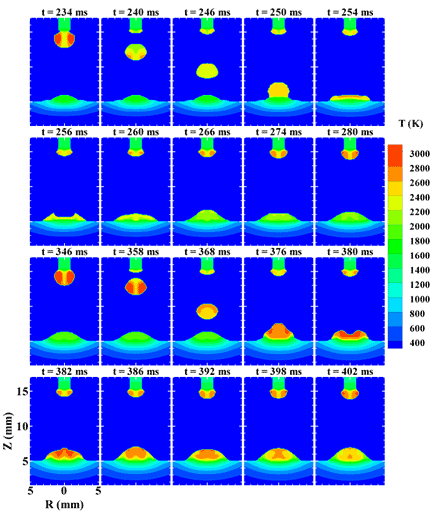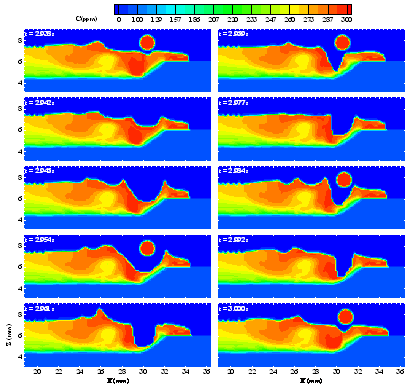Projects
Modeling Transport Phenomena and Thermo-Mechanical Stress in Welding Processes
Gas metal arc welding (GMAW) and gas tungsten arc welding (GTAW) have been widely used as a joining method in every industrial sector. Due to the complexity of welding processes, the trial and error method is still used by welding engineers to solve welding problems and find optimal welding parameters. Modeling transport phenomena in welding processes can provide insights to the welding processes and enable welding process parameters optimization. We have developed several models to simulate the arc plasma, electrode melting, droplet formation and detachment, droplet transfer in the arc, droplet impingement on to the weld pool, weld pool dynamics and solidification. We will continue to develop these transport models and integrate them with structural models to simulate the coupled effects of heat transfer, fluid flow, current flow, phase change, and structural changes in the workpiece. The coupled transport-structural model will be used to investigate welding physics, weld defects formation mechanisms, and create innovative methods to control welding processes and improve weld quality.

Fig. 1 Simulation results of an axisymmetric arc: (a) temperature distribution; (b) velocity distribution; (c) Electrical potential distribution.

Fig. 2 Simulation results during droplet formation: (a) Temperature; (b) Velocity; (c) Electrical potential; (d) Current density; (e) Electromagnetic force.

Fig. 3 A sequence of temperature distributions in the metal showing droplet generation, detachment, transfer in the arc, impingement onto the weld pool, and weld pool dynamics.

Fig. 4 Droplet impingement onto weld pool in a three-dimensional welding.